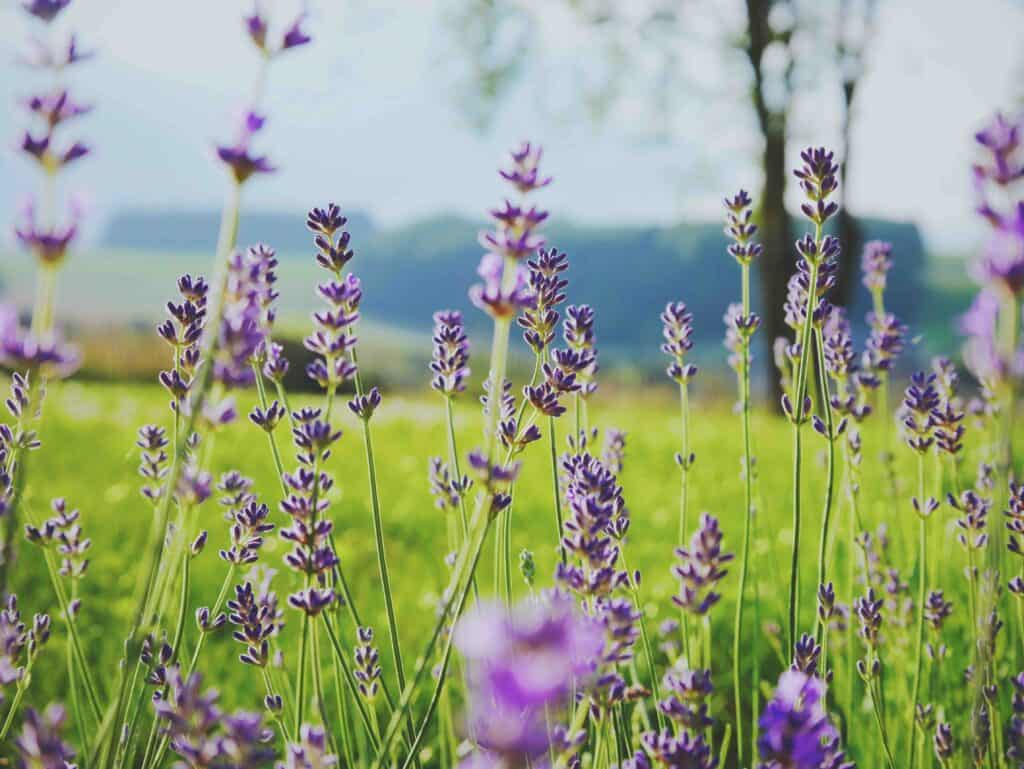Enjoy the Pleasure of Fragrant Flowers in your Garden
Flowers that are deliciously scented as well as colorful are a special pleasure, in the garden or in pots on a deck or patio where you enjoy spending time in summer. Fragrant plants are delightful in a garden bed next to a porch or patio as well, where you can enjoy their special qualities. If you plan to use the patio or deck a lot in the evening, consider planting a bed or some pots of night-blooming flowers, or a moonlight garden of white flowers that will glow as the light fades at dusk.

Scents are often strongest in flowers with waxy petals. In many flowers, especially those that bloom at night, the fragrance serves to attract the insects that pollinate them. Many of our showiest, most brilliantly colored flowers have hardly any scent, but they don’t need it. Their pollinators are attracted by sight instead of by smell.
There are many kinds of fragrance. Flowers can smell fruity and sweet, like orange blossoms, honey-scented, like honeysuckle or sweet alyssum, or spicy and clove-scented, as in carnations, garden pinks and stocks. Some flowers have an aroma reminiscent of vanilla – sweet peas and heliotrope are good examples. Other flowers smell like violets – some tulips have that kind of scent. Still other flowers, many of them tropical, possess a heady perfume that is strong, sweet, and almost overpowering. Jasmine and gardenias fit into this category.
Roses, especially classic varieties that have been grown for centuries – damasks, centifolias, moss roses and cabbage roses, for instance – can have gloriously fragrant flowers, often composed of complex notes, as do the newer varieties bred by David Austin. G. Michael Shoup, an expert on old roses and proprietor of the Antique Rose Emporium and author of Empress of the Garden, has discovered many nuances of fragrance in roses. In his book he described discovering at an event a display of roses known for their fragrance and finding many subtleties to their scents.
A rose in many cases is not just a rose, as far as their aroma is concerned. The fragrance most of us would identify as “smells like a rose” can in fact contain notes of fruit, musk, citrus and spice. People with a highly developed sense of smell may be able to discern these subtleties and more. The very best of these people can find careers as “noses” in the perfume industry. But for most of us, fragrant flowers are just a simple pleasure.
Fragrant flowers, in addition to being beautiful, have also been found to produce emotional, psychological and in turn physiological effects on people. Those effects for the basis of aromatherapy, in which fragrances are inhaled for healing purposes. Lavender, for example, promotes relaxation. Aromatherapy uses essential oils, which concentrate the scents of the flowers and plants. But maybe simply enjoying the fragrance of flowers blooming in gardens and pots can also affect us in a positive way and make us feel happier.
Another quality of fragrant flowers is that they can bring back memories. You might remember the scent of a flower you first encountered as a child in your grandmother’s garden. When we include fragrant flowers in gardens and pots, we share those scents with family and friends who visit and spend time with us among them. Without even thinking about it, the fragrant plants we grow can create memories we may not be aware of now but that may surface years later. What a delightful reason to include some fragrant flowers in your landscape.
Some good plants to consider for a fragrance garden include sweet alyssum, clove pinks, nasturtiums, nicotiana, petunias, sweet peas, bearded irises, peonies, lilies, heliotrope, lavender, stocks and verbena. Roses, of course, can fill a garden with delicious perfume all by themselves. All these flowers bloom in summer, when the hot, heavy air intensifies their scents. Vines such as honeysuckle and wisteria can perfume a trellised gazebo or arbor with their heavenly aromas.
A night blooming relative of morning glories – the moonflower – unfurls its fragrant white blossoms as the sun sets, to attract the moths that pollinate it. Some local nurseries carry moonflower plants, along with morning glories, and if you plant one in your garden it will probably keep blooming well into fall, until frost shuts it down. The flowers open late in the afternoon, and fade in the morning light. They’re enchanting, as are so many fragrant blossoms.









![With a floral motif that is translated to diners through vibrant wallpapers, hanging plants, painted ceilings, and stylish light fixtures, @floa_whb employs color in a light and playful way. The menu is playful, too; with carefully curated dishes like blackberry-glazed Crescent Farm duck and a whimsical take on dessert with the so-called Flower Pot. [link in bio]](https://hamptonsrealestateshowcase.com/wp-content/uploads/sb-instagram-feed-images/481243996_18493339045030135_2338222024097750447_nfull.webp)
![Rivage Bal Harbour - where sand meets the sky. Located in the exclusive Bal Harbour neighborhood, this 275± ft. oceanfront tower reflects the beauty of its surroundings, with breathtaking views of the Atlantic Ocean and Miami Skyline. #RivageBalHarbour
Visit RivageBalHarbour.com to learn more. [link in bio]](https://hamptonsrealestateshowcase.com/wp-content/uploads/sb-instagram-feed-images/480846207_18493167388030135_9161471873241925950_nfull.webp)
![40 Ditch Plains Road offers immediate access to the world-renowned Ditch Plains beach, known for its rolling waves and endless stretches of pristine sand. This 3 bedroom, 3 bath home offers the perfect blend of comfort and style, providing ample space for you and your guests to freshen up after a day of surfing or soaking up the sun. Represented by @angelaboyerstump of @sothebysrealty. [link in bio]](https://hamptonsrealestateshowcase.com/wp-content/uploads/sb-instagram-feed-images/480033361_18493013812030135_8705914201213142976_nfull.webp)
![Designed by renowned architect Jaquelin T. Robertson, this stunning 11,000± sq. ft. estate sits on 5.5± acres with 450± ft. of frontage on Taylor Creek, complete with a boat dock. It features grand rooms, 10 bedrooms, 12.5 baths, and a 20x75 elevated pool with breathtaking water views. Represented by @haraldgrantrealestate and @brucegrantre of @sothebysrealty. [link in bio]](https://hamptonsrealestateshowcase.com/wp-content/uploads/sb-instagram-feed-images/479992734_18492832849030135_6210124399861200108_nfull.webp)
![22 Maple Street redefines opulence with the highest echelons of craftsmanship, captivating views of the Atlantic Ocean and will be delivered turn-key with custom designed interiors. This modern masterpiece offers 9,000± sq. ft. of luxury on a .92± acres with 6 bedrooms, 7.5 bathrooms, and a private roof deck pool. Represented by @braunroskoteam of @douglaselliman. [link in bio]](https://hamptonsrealestateshowcase.com/wp-content/uploads/sb-instagram-feed-images/479984230_18492624619030135_7798144118867056277_nfull.webp)

![Valentine’s Day is here! 💗🌹 If you still need the perfect bouquet, @bespokefloinc in Southampton has you covered with stunning, last-minute arrangements that are sure to impress. Don’t show up empty-handed—grab something beautiful today! 💐 [link in bio]](https://hamptonsrealestateshowcase.com/wp-content/uploads/sb-instagram-feed-images/479564029_18491854765030135_8706847686307257841_nfull.webp)
![Talo Builders presents a newly constructed, 8 bedroom, 9.5 bath masterpiece spanning 7,651± sq. ft. across three levels. Situated on a private 1.8± acre lot in the prestigious Ranger Estates of East Hampton, 11 Dering Lane features a grand foyer, spacious great room, formal dining room, and family room, all adorned with high-end finishes. Represented by @jameskpeyton and @jfrangeskos of @thecorcorangroup. [link in bio]](https://hamptonsrealestateshowcase.com/wp-content/uploads/sb-instagram-feed-images/476838961_18491679673030135_5422220981073676272_nfull.webp)
